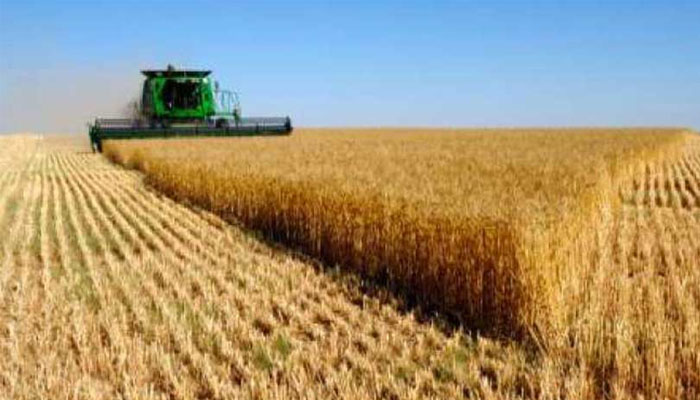The high cost of low yields
LAHORE: Pakistan’s pathetic agriculture policies have resulted in huge drain of foreign exchange. Low yielding seeds create shortage of crops like cotton, wheat, and edible oil, which is covered via imports. However, seeds are imported too.
Over seventy percent of Pakistan’s exports originate from agriculture. Rice exports after textiles are the largest foreign exchange earners for Pakistan.
The basic problem is that of quality seeds. Public sector research in developing new and better seed varieties is pathetic. The private sector is hostage to the long approval process for certification of their seeds, as the approvers in the government themselves are from public seed research institutes. They have a vested interest.
New seed varieties developed by the private sector with better yield are a blot on the public sector seed institutes that have failed to develop any seed through research. They often own the popular smuggled seed varieties and give those seeds their name.
Provincial seed research institutes are starved of funds as 90 percent of their budget is consumed on salaries and administrative expenses. There is a very small amount left for research that must be distributed among several PhD researchers employed at these institutes. The funds are not sufficient for even one credible research.
Seed is the most crucial input in agriculture. The productivity of the crop depends on the quality and efficacy of the seed. The ability of the seed to resist pests and drought are the features that are embedded after research.
These seeds are certified by the provincial governments confirming the features claimed by the public or private researchers. Still there is a dearth of quality seeds in Pakistan.
The country still depends on the Maxi-Pak wheat variety introduced in the 60s. Our per acre wheat production is half that of neighbouring India.
In cotton, we failed to develop its BT variety with the result that cotton production in the country declined from 14.87 million bales in 2014-15 to only 8 million bales in recent years.
Basmati rice production in Pakistan is almost half that of the long grain rice of India and we are constantly losing our global share to India.
Maize production has multiplied in recent years on the strength of imported hybrid seed. In the same way, coarse rice exports are constantly on the rise because of imported hybrid rice seed and its production in Pakistan through transfer of technology.
After the All Pakistan Textile Mills Association, the Rice Exporters Association of Pakistan (REAP) has also urged the government to focus on demand driven research, taking all stakeholders on board, particularly rice exporters.
REAP Chairman Ali Hassam Asghar regretted that public sector research institutions were doing research in isolation whereas Pakistan’s competitor, India was bringing a new variety every year. It is becoming very difficult for us to compete with them.
A decade back Basmati share in our rice export was over 70 percent. Now it has reversed as the share of coarse rice variety dominates rice export.
The cost of coarse rice has reduced appreciably because of high yielding hybrid rice seeds imported from China and production of the same high yielding variety through transfer of technology from China. Since Basmati or the long grain rice is grown in Pakistan and India only, its high yielding seed must be developed in Pakistan. Indians have already done so and are leading long grain exporters.
Asghar said both federal and provincial governments should pay attention towards the whole rice supply chain. Most vital now was the availability of extra-long grain seeds.
Currently, REAP members have no option but to export high-cost low yield super basmati and 1121 varieties. He said private sector companies claimed that the variety approval system of the government was flawed, as preference was given to low yield government varieties over high yielding private sector varieties.
Private rice seed researchers are dismayed over the delay in approval of their high yield basmati varieties, while low yield varieties of the public sector are approved. In one instance, one high yield rice variety from the private sector was rejected by the provincial seed council on spot examination with a comment that “if this variety goes for fine, we may recommend”, otherwise it will be rejected if the researcher company wants to get it approved as a basmati variety.
Yield of that variety was higher by 12 percent than the check variety (super basmati). Incidentally, the same variety was recommended by PARC, which is a federal body.
This variety was again sent for spot examination and was cleared, but this time the objection was that the data of the researcher was old. These delaying tactics discourage the private sector as research is an expensive process.
To ensure fair play, the provincial seed council must have representation from private sector research centres as well as relevant exporting associations, beside experts from the provincial government and a representative of the federal government.
-
 Kelly Clarkson Discovers A Shark Named In Her Honour
Kelly Clarkson Discovers A Shark Named In Her Honour -
 HBO Mulls Major 'Game Of Thrones' Spin-off Focusing On A Stark
HBO Mulls Major 'Game Of Thrones' Spin-off Focusing On A Stark -
 Ashton Kutcher Says He's Proud Of Demi Moore
Ashton Kutcher Says He's Proud Of Demi Moore -
 Why Prince William, Kate Hired A Crisis Expert Despite Royal 'calm'?
Why Prince William, Kate Hired A Crisis Expert Despite Royal 'calm'? -
 Extent Of Meghan Markle’s Fears Gets The Spotlight: ‘The Press Detest Her Which Is A Problem’
Extent Of Meghan Markle’s Fears Gets The Spotlight: ‘The Press Detest Her Which Is A Problem’ -
 Caitlyn Jenner Finally Reacts To Kylie, Timothee Chalamet Relationship
Caitlyn Jenner Finally Reacts To Kylie, Timothee Chalamet Relationship -
 Prince William’s Beefed Up PR All Set To Fight Off ‘plot’ And ‘it Might Not Be Long’
Prince William’s Beefed Up PR All Set To Fight Off ‘plot’ And ‘it Might Not Be Long’ -
 Kate Middleton Ups A New Role Unofficially For King Charles As William Prepares His Coronation
Kate Middleton Ups A New Role Unofficially For King Charles As William Prepares His Coronation -
 Teyana Taylor Says She Misread Leonardo DiCaprio Globes Moment
Teyana Taylor Says She Misread Leonardo DiCaprio Globes Moment -
 A$AP Rocky Reveals What Encouraged Him To Date Rihanna
A$AP Rocky Reveals What Encouraged Him To Date Rihanna -
 Newborns At Risk: Health Experts Warn Your Baby Could Already Have Diabetes
Newborns At Risk: Health Experts Warn Your Baby Could Already Have Diabetes -
 Sarah Ferguson Updates Her Plans Now That Andrew’s Eviction Is Nine Days Away
Sarah Ferguson Updates Her Plans Now That Andrew’s Eviction Is Nine Days Away -
 Hailey Bieber Sends Cease And Desist To TikToker
Hailey Bieber Sends Cease And Desist To TikToker -
 Kate Middleton Celebrates England Women's Rugby Stars After World Cup Win
Kate Middleton Celebrates England Women's Rugby Stars After World Cup Win -
 Kris Jenner Dubs Chicago West Her 'sweet Angel' As She Turns Eight
Kris Jenner Dubs Chicago West Her 'sweet Angel' As She Turns Eight -
 Josh Charles Credits Taylor Swift For His, Ethan Hawke’s Moon Person Trophies
Josh Charles Credits Taylor Swift For His, Ethan Hawke’s Moon Person Trophies




